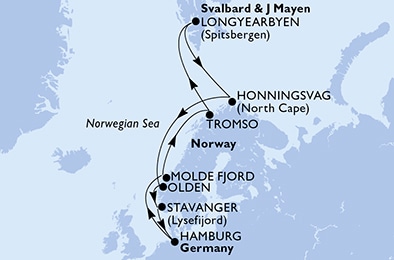
Port Longyearbyen (Spitzbergen)
Cruise ships play a significant role in Longyearbyen, Svalbard, contributing significantly to the local economy. The port of Longyearbyen welcomes numerous cruise ships every year, serving as a key gateway for tourists who are eager to explore the natural beauty and wildlife of the Arctic region. This influx of visitors helps to support local businesses and services, making tourism a vital industry for the community.
Activities for cruise ship passengers in Longyearbyen are varied and centered around the unique Arctic environment. The visitors can enjoy dog sledding, ice cave tours, snowmobile safaris, and guided hikes. Moreover, the region is renowned for its diverse wildlife, offering opportunities for bird watching and polar bear spotting. The midnight sun and the northern lights are other natural phenomena that attract tourists to this remote part of the world.
History
The port of Longyearbyen in Svalbard, named after its founder John Munro Longyear, was established in 1906 as part of the Arctic Coal Company. Its primary purpose was to serve as a base for coal mining activities in the region. The port played a pivotal role in the economic development of the town, facilitating the export of coal and the import of mining equipment and supplies.
During World War II, the port was destroyed by German forces in 1943, but was later rebuilt. With the decline of coal mining in Svalbard, the port has evolved to support other economic activities, primarily tourism and scientific research. Today, the port of Longyearbyen is a vital link for people and goods moving in and out of the Arctic region.


 With bus transport to the port
With bus transport to the port




